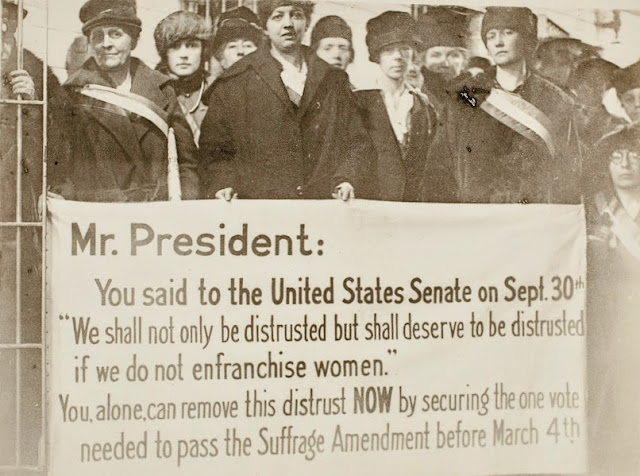Martha Foley (1897-1977) of Boston, America's Foremost Editor of Short Stories in the 20th Century
Illustration of Martha Foley, Courtesy of New York Times
Martha Foley is on the far right, wearing glasses.
Photo courtesy of Historic New England
As a teenager and young woman, Martha was an ardent suffragist and was arrested on Boston Common in 1919 for protesting with a group of women during President Woodrow Wilson’s visit to Boston.
She married fellow writer Whit Barnet and they embarked on adventure, travel and writing, living in Greenwich Village, Vienna and Paris. She worked as a city copy desk for newspapers in New York and Los Angeles, one of the first women to hold that position. She managed the book review page for the Los Angeles Daily News and taught writing at Columbia University in New York for 20 years.
In 1931, while living in Vienna, she and Whit launched a magazine called Story Magazine, dedicated to publishing the best short stories. The magazine flourished for a decade. In 1941 she took over the role of editor from another Bostonian, Edward J. O'Brien, of the annual publication he initiated called Best American Short Stories, which she edited for 37 years.
A few years before her death in 1977, Martha had moved to Northampton, MA and began writing her memoir, The Story of Story Magazine. She died before it was completed, and her colleague Jay Neugeboren, whose story was included in the 1965 edition of America's Best Short Stories, finished the project and helped get it published. Neugeboren described the memoir as "a splendid chronicle of an extraordinary era."
The Martha Foley Collection is at the American Heritage Center, University of Wyoming.
Read more about Massachusetts women of Irish descent on irishboston.blogspot.org.
Research + Text, Michael Quinlin






Comments
Post a Comment